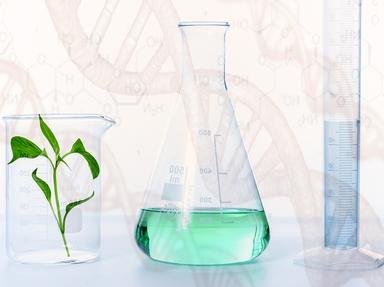Quiz Answer Key and Fun Facts
1. You're cooking a comforting bowl of lentil soup and reach for a fine, white crystalline substance that not only boosts flavor but also helps prevent iodine deficiency. Which compound are you most likely using?
2. You're unclogging a stubborn kitchen drain and reach for a powerful cleaning agent known for breaking down grease and organic matter. Which compound are you most likely using?
3. You're watching a dazzling fireworks display on Diwali night. The sky lights up with brilliant violet hues, thanks to a compound often used in fertilizers and pyrotechnics. Which salt is responsible for this vibrant color?
4. After a long day, you prepare a warm bath to ease muscle soreness. You add a crystalline compound known for its therapeutic effects and use in gardening. Which salt are you using?
5. A patient diagnosed with iron-deficiency anemia is prescribed a supplement to increase their hemoglobin levels. Which compound is most likely being administered?
6. You're baking a fluffy cake and need a leavening agent that reacts with acidic ingredients to release carbon dioxide, making the batter rise. Which compound do you add?
7. You're using a translucent crystal after shaving to soothe minor cuts and reduce bleeding. This compound is also used in water purification and pickling. Which salt are you applying?
8. You're hiking in the summer heat and twist your ankle. You grab a first-aid kit and activate a cold pack that cools instantly without refrigeration. Which compound is responsible for this reaction?
9. During a festive celebration, you notice brilliant red bursts in the fireworks display. These vivid colors are produced by a compound often used in pyrotechnics and flares. Which salt is responsible for this red hue?
10. You're taking a supplement to support bone strength and relieve occasional heartburn. It's a chalky compound found in antacids and even in eggshells. Which salt are you consuming?
Source: Author
Hesting_horts
This quiz was reviewed by FunTrivia editor
rossian before going online.
Any errors found in FunTrivia content are routinely corrected through our feedback system.
